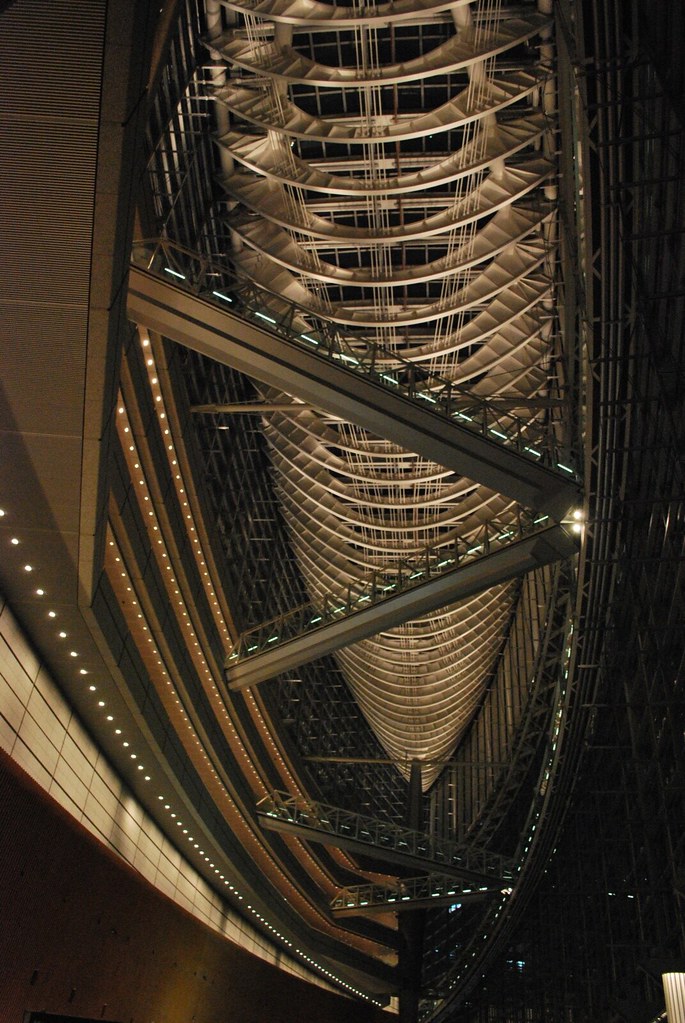
Edo Tokyo Museum - Kiyonori Kikutake - 1993. The grand exhibition hall lifted from a giant podium on four giant legs which provides vertical access. The main access is through a disturbing red escalator.
Just the building itself, which looks like it has been spirited from the set of Star Wars, is a wonder. - Lonely Planet Japan
Another bubble project this time the city museum, which covers the history and development from Edo to Tokyo with a story ending somewhere around the Olympics gives a certain insight into the city.
As many bubble projects the cost of this museum was big, and a better end result could surely have been delivered for the same amount of money. But there still is something charmingly utopian over this whole project. Sadly the podium, the vast outdoor space underneath the museum seems sadly under used. The would be a wonderful setting for a park project.
The architect behind the museum Kikutake is mostly famous for Sky House, metabolism and his various marine city schemes. Sadly the 1994 Tokyo Sofitel, close to Ueno, telling the this story is no longer.
He also worked with the group behind various hyper building schemes.
Access: JR Sobu-line Ryogoku or TOEI Oedo-line
Other works: Sky House










































